The coronavirus pandemic may have shut down theaters around the world and curtailed moviegoing in the immediate future, but there is one silver lining. Film festivals that were once in-person events are now accessible in a way that would have been unimaginable a year ago. Viewers across the United States are just a login away from seeing some of the best nonfiction films of the year at the annual DOC NYC festival by selecting one film at a time or an all-access package. And the offerings are plentiful, with 119 feature films and more than 100 shorts that can be streamed through November 19.
The festival offers an easy way to catch up on some of 2020’s top films: Crip Camp, Jacinta, MLK/FBI, Time, and Welcome to Chechnya. It’s also a chance to be among the first to view a world premiere, and the overall choices are overwhelming. The subjects range from social justice to pop culture to biographies. Below are five films that are a recommended scattered sampling, just a sliver of what’s available.
76 Days
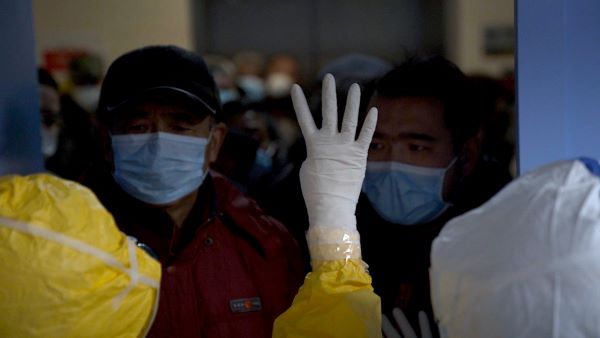
Given that most documentaries take years to make, it is almost a miracle that 76 Days has already been completed, given that it started filming less than a year ago.
Although many who are burned out on anything Covid 19–related may initially resist this film, that would be a mistake: it exudes an urgency that’s contagious (bad pun be damned) as it begins with a rush: a woman runs down a hospital corridor only to be restrained by staff from entering the room of her father, who is dying. She has to say her good-bye from the hallway instead.
It was filmed in Wuhan, China, the emerging epicenter of the pandemic in January, when dozens of mostly elderly patients crowd a cramped entryway, banging on the door and, needless to say, not keeping their physical distance from each other. A nurse, scolding them, shouts for order because there’s “too much chaos.”
Directors Hao Wu, Weixi Chen (who was embedded in the hospital), and Anonymous trail behind the staff of the Wuhan Red Cross Hospital during the first three months of the crisis. All workers are shrouded from head to toe in hazmat wear. Names written in Magic Marker on the back are the only visible way to tell who’s who. It’s not until the end that we see the face of the ever-patient nurse Yang Li.
She and her colleagues go far beyond the call of duty, one holding up a phone so a grandchild can urge a hospitalized grandma to stay strong. One obstinate patient in particular drifts in and out of frame, an elderly fisherman who is caught more than once wandering from his bed, to where he’s gently guided back. Although the focus is limited to the hospital, there is also a sense of the wider response to the lockdown in the city: the deserted streets and a banner hanging above an intersection, “Staying home makes for a happy family.”
Though fear and disorder set the tone, the film ends three months later, when the city of roughly 11 million has clearly turned a corner. Gone are the panicked patients, the high numbers afflicted, and the severe shortage of beds. Among the many responses the absorbing film will elicit are wistfulness and relief at witnessing a crisis contained: Wuhan’s lockdown was lifted after 76 days on April 8.
Women in Blue

This is essential viewing for illuminating recent attempts to reform the Minneapolis Police Department. After beginning with the reverberations from the killing of George Floyd, director Deirdre Fishel goes back to 2017 to the leadership of Janeé Harteau, the first woman and openly gay police captain in the city’s history. Her goal was to create “change from within,” by promoting more women to leadership positions as a crucial part of changing the culture of policing. According to her, female officers seldom use excessive force, as one motivation for the policy.
However, her tenure is cut short; she resigns following the shooting death in 2017 of Justine Damond, a White meditation teacher, by a Black rookie officer in murky circumstances. That high-profile incident was preceded in 2015 by the death of Jamar Clark, an unarmed Black man shot by a White cop—the resulting and rising protests included the 18-day occupation of a precinct station. After Medaria “Rondo” Arradondo replaces Harteau and becomes the city’s first Black police chief, he appoints no woman to his executive team.
The film implies the complications involved in progressive police reform, without pointing a finger directly to one policy or person as a roadblock. It’s about the culture writ large. If the film offers any sort of directive, it’s through Sgt. Alice White, one of six Black female officers in an 850-member force and the most compelling figure with whom Fishel rides along: “it’s not just law enforcement that needs to change, and that’s what people aren’t discussing.”
Finding Yingying
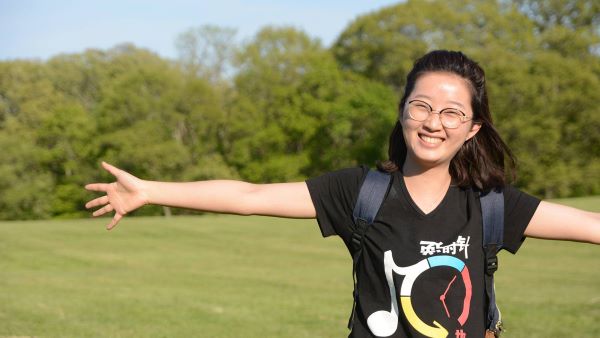
Yingying Zhang, a 26-year old agricultural PhD student at the University of Illinois Urbana-Champaign, had only lived in the United States for six weeks when she disappeared in June 2017 on her way to sign an apartment lease.
Unlike many recent real-life crime documentary filmmakers, director Jiayan “Jenny” Shi focuses less on the violent crimes surrounding the disappearance and far more on Zhang and those she left behind, though providing a need-to-know outline of what happened. Rather than a procedural, she has made a tribute to the missing woman, aided by her extraordinary access to Zhang and family.
The filmmaker knew Zhang when they were students at the prestigious University of Beijing, and she reads from Zhang’s journal, where the observations are perceptive, philosophical, and on a higher plane than a typical “Dear Diary” entry. Through the voice-overs and abundant photographs and interviews with the survivors, she reconstructs Zhang’s life to form a rounded portrait.
The director also becomes a surrogate member of Zhang’s family, who arrive in the States to take part of the search for Yingying. There is little unguarded in front of the camera; the relationship between the missing woman’s volatile parents frays under pressure and grief.
Toward its conclusion, the film offers up what may be this year’s best piece of documentary gold, a meeting between a federal witness and the grieving family. It’s an incredibly moving moment that serves something like closure, at least for the audience.
A Crime on the Bayou

In her 2017 documentary The Rape of Recy Taylor, director Nancy Buirski emphasized Rosa Parks’s long record of activism before she helped spark the Montgomery bus boycott. In her latest work, the director brings to viewers’ attention an important and groundbreaking 1968 Supreme Court case that should be better known, Duncan v. Louisiana, which ruled for the right to a criminal trial by jury in state courts under the 14th Amendment.
At age 19, Gary Duncan touched the arm of a white teenager in an effort to defuse a fight between White and Black teenagers one month after the public schools were integrated in Plaquemines Parish, Louisiana. From then on, he would face one trumped-up charge after another. His case is a textbook definition of oppression, as he was arbitrarily charged for spurious crimes, never knowing what he would be accused of next. One charges was “cruelty toward a juvenile.” At this time and for decades earlier, the state’s southernmost parish was ruled by Democratic boss and staunch segregationist Leander Perez. His Jim Crow regime and iron-fisted control re-created All the King’s Men on steroids, confirmed by the archival footage of a preening Perez before the press.
Buirski’s earlier film centered on a racist crime in 1940s Alabama whose witnesses were deceased, but this film has the advantage of interviews with many of the participants, especially Duncan and his ally, attorney Richard Sobol, who took Duncan’s case to the Supreme Court. Meanwhile, her film evokes an era with the inclusion of the atmospheric Louisiana Story, Robert J. Flaherty’s 1948 docufiction, and the plentiful shots of moss-covered, still water bayous. The documentary also serves as a wake-up call: the time of Jim Crow really isn’t that far in the past. In 1996, Perez, who died in 1969, was inducted into the Louisiana Political Museum and Hall of Fame.
Wojnarowicz: F**k You F*ggot F**ker
If only I had seen this documentary a few years ago before attending the 2018 Whitney Museum of American Art’s David Wojnarowicz: History Keeps Me Awake at Night. It’s more immersive than a monograph and gives viewers a strong sense of the life, times, and opinions of the multimedia artist through an ample archive: voluminous journals, photographs, Super 8 films, answering machine messages, and audio recordings he stared at age 21.
Nothing is off limits, including his days as a teen hustler in Times Square. He seems to have recorded all his thoughts, and his collection is a gift to director Chris McKim, who has made one of the more illuminating profiles of an artist in some time. He gives you the total package: the artist, whose self-declared objective was to challenge the historical record, and his art, from the photo series “Arthur Rimbaud in New York” to the rock band 3 Teens Kill 4, his militaristic stencil art, and then some.
McKim bombards viewers with images and seamless voice-overs from chroniclers of the time, including biographer Cynthia Carr (Fire in the Belly) and the irascible and wry Fran Lebowitz. The result is a personal and a sweeping view of the 1970s and ’80s, the AIDS epidemic, and the congressional cultural wars, which targeted Wojnarowicz’s work in an exhibit on AIDS, deeming it political and not artistic. Wojnarowicz retorted: “There’s no way you can separate politics from AIDS.” He died of the disease in 1992 at 37.
He became part of the East Village art scene, along with Kenny Scharf, who is the subject of another documentary in the festival. Given that they are completely different artists tonally and in outlook, Wojnarowicz and Kenny Scharf: When Worlds Collide mirror those differences—the subtitle of Wojnarowicz directly quotes the title of a piece of his art and reflects his more confrontational approach. For its look back on 1980s New York, McKim’s film joins such worthy, evocative documentaries as How to Survive a Plague and Shadowman.

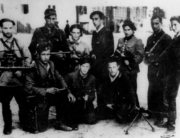
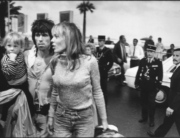

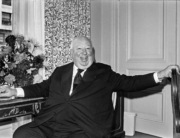

Leave A Comment